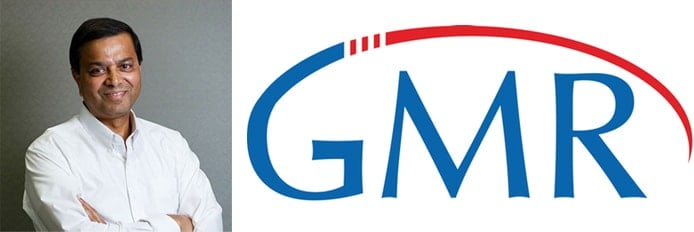
TL; DR: When Ajay Prasad wanted to use a transcription service, he couldn’t find one that would meet his needs. Transcribers at the time wouldn’t give helpful price estimates and couldn’t process digital audio files. Because Ajay knew how frustrating it was to work with businesses that didn’t listen to customers, he started GMR Transcription and makes it a point to listen to his. With patience, hard work, and an open ear, he has expanded GMR Transcription’s customer base and continues to add new services that enable site owners to quickly and efficiently reach new audiences.
When Ajay Prasad was working in marketing, he continually tripped over the same stumbling block. He needed transcriptions of the interviews he had recorded, but no one offered the services he needed.
Most transcription companies at the time only served the medical industry, and none would provide a helpful quote for the cost of services. More frustratingly, according to Ajay, transcribers didn’t know how to process digital files — they all insisted he mail a cassette tape.
When he launched GMR Transcription in 2004, customers could upload audio files to the company’s website and were charged based on the number of minutes in the recording. Ajay built the company he wished had existed when he needed the help.
“I thought marketing consultants would use GMR Transcription because that’s why I had wanted the service,” he said. “I’ll be candid: I didn’t realize there was such a huge market. To my surprise, professors, businesses, writers, and students found my site. I couldn’t believe there were so many non-medical transcription needs.”
While GMR continues to expand, Ajay never stops learning. That’s what has helped him identify new services to offer, build a more sophisticated platform, and create a more efficient management team.
“We’ve been in business for 13 years, and we’ve never raised our prices,” he said. “Everything we learn, everything we improve… that all gets passed down to the customer.”
Scaling to Success: The First Four Years of GMR Transcription
As countless other startups experience, GMR Transcription initially struggled to keep up with the rapidly growing demand, scale their technology platforms, and educate customers.
“I was new to the business and learning as I went,” Ajay said. “At the beginning, I gave audio files to absolutely anyone who claimed they could transcribe. That created both timeliness and quality issues, so I had a lot of unhappy clients.”
To keep customers happy, he made a promise — to give full refunds to any dissatisfied clients, no questions asked.
“I had no idea if people would take a chance on my business,” Ajay said. “I needed to make sure that the people who did take that chance didn’t feel ripped off.”
He focused on hiring smart employees and hard-working problem-solvers like Beth Worthy, who started as an office manager and became the company’s CFO. The GMR Transcription team began building more efficient processes, along with a transcriber test and system that ranked their quality and turnaround time.
“When you start a business from scratch, you have to jump over a lot of hurdles,” he said. “It took a long time to solve every issue that came our way, but we were eventually running on all cylinders, and the business really took off.”
Why Transcriptions and Translations Matter to Site Owners
Today, GMR Transcription serves more than 10,000 clients, with many of them uploading on a regular basis. Ajay estimated 20 to 30 new clients sign up each month, and half of those come from referrals. The increased customer base meant clients started asking for services the business didn’t offer, namely translations and transcriptions in Spanish and Mandarin.
“Although we had already hired multi-lingual transcribers, we found that transcription and translation require very different skill sets,” Ajay said. “So many of our clients were asking for the service, though, so we started to hire trained and certified translators to fulfill their requests.”
The company’s translation service especially took off as online businesses and website owners sought to launch sites to reach foreign markets. That’s where the company’s early concentration on providing quality work sets GMR Transcription apart, according to Ajay.
“It’s not a simple translation because the message has to stay consistent, even as the culture changes,” he said. “We needed translators who not only understand the language but also understand branding.”

Ajay Prasad created GMR Transcription in 2004 to take transcription services beyond the medical and legal industries.
Increased online accessibility requirements also drive much of GMR Transcription’s work for online businesses. Broadcasters, reporters, podcasts, and other organizations making use of video and audio online frequently ask GMR to create transcriptions of those files to be compatible with screen readers.
To make the transcriptions readable and user-friendly, Ajay said the transcribers working for his company must also have strong proofreading and writing skills.
“A straight transcription is very different than a cleaned-up interview that you would find on a website or in a newspaper,” he said. “If you simply transcribe what someone actually says, word for word, it’s going to be extremely choppy, full of grammatical errors, and hard to read.”
Keeping Costs Down by Building a Sophisticated Platform
The logistics of running a massive transcription company are anything but simple, Ajay told us, estimating that the company receives between 60 and 150 files per day and assigns them to transcribers across the country.
“Typically, the timeline is three to five days,” he said. “But there are also a lot of one-day and same-day turnarounds.”
The company’s vast network of US-based transcribers and translators work on a contract basis but are paid every two weeks — regardless of whether the particular client paid the company. Ajay and GMR Transcription invested heavily in automating daily tasks to enable the company’s small team to manage such large and complex systems.
“It’s all about learning over a period of time,” he said. “When our volume was a third of what it is today, we had 10 people working full time to run the entire operation. Now, we have three times that volume and a staff of only three people.”
HostingAdvice.com is a free online resource that offers valuable content and comparison services to users. To keep this resource 100% free, we receive compensation from many of the offers listed on the site. Along with key review factors, this compensation may impact how and where products appear across the site (including, for example, the order in which they appear). HostingAdvice.com does not include the entire universe of available offers. Editorial opinions expressed on the site are strictly our own and are not provided, endorsed, or approved by advertisers.
Our site is committed to publishing independent, accurate content guided by strict editorial guidelines. Before articles and reviews are published on our site, they undergo a thorough review process performed by a team of independent editors and subject-matter experts to ensure the content’s accuracy, timeliness, and impartiality. Our editorial team is separate and independent of our site’s advertisers, and the opinions they express on our site are their own. To read more about our team members and their editorial backgrounds, please visit our site’s About page.

